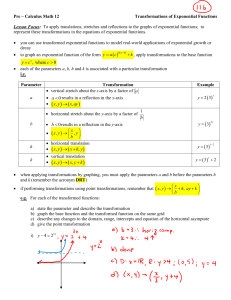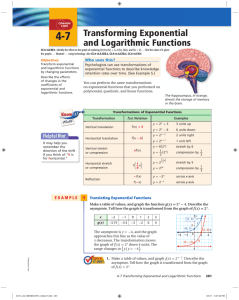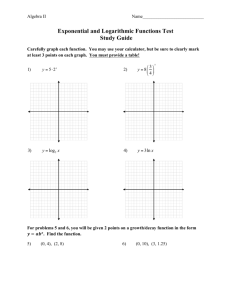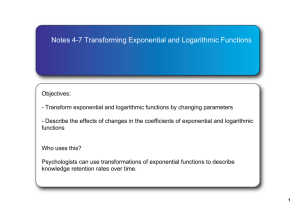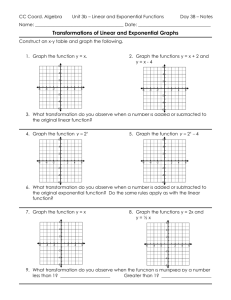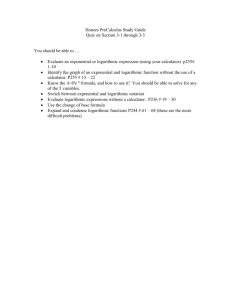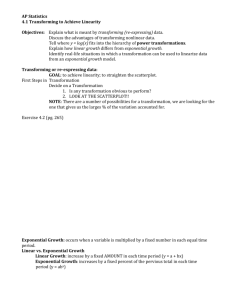Document
advertisement
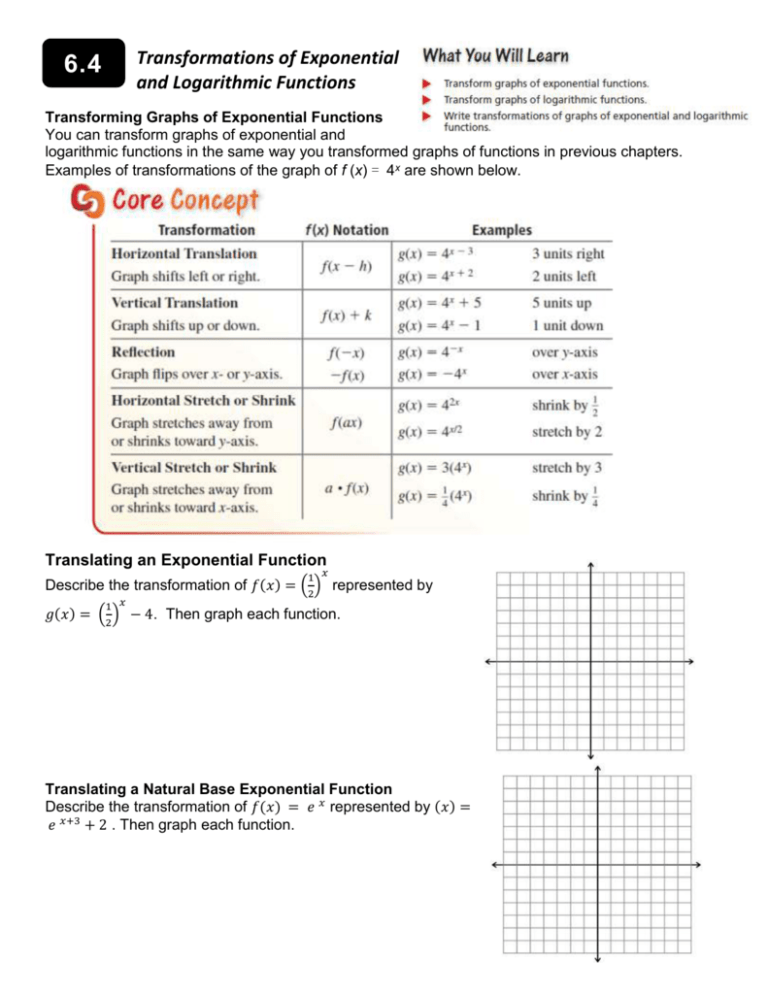
Transformations of Exponential and Logarithmic Functions 6.4 Transforming Graphs of Exponential Functions You can transform graphs of exponential and logarithmic functions in the same way you transformed graphs of functions in previous chapters. Examples of transformations of the graph of f (x) = 4x are shown below. Translating an Exponential Function 1 𝑥 Describe the transformation of 𝑓(𝑥) = (2) represented by 1 𝑥 𝑔(𝑥) = (2) − 4. Then graph each function. Translating a Natural Base Exponential Function Describe the transformation of 𝑓(𝑥) = 𝑒 𝑥 represented by (𝑥) = 𝑒 𝑥+3 + 2 . Then graph each function. Transforming Exponential Functions Describe the transformation of f represented by g. Then graph each function. 1 a. 𝑓(𝑥) = 3𝑥 , 𝑔(𝑥) = 33𝑥 − 5 b. 𝑓(𝑥) = 𝑒 −𝑥 , 𝑔(𝑥) = − 8 𝑒 −𝑥 Describe the transformation of f represented by g. 1. f (x) = 2x, g(x) = 2x − 3 + 1 2. f (x) = e−x, g(x) = e−x − 5 3. f (x) = 0.4x, g(x) = 0.4−2x 4. f (x) = ex, g(x) = −ex + 6 Transforming Logarithmic Functions Describe the transformation of f represented by g. Then graph each function. 1 a. 𝑓(𝑥) = 𝑙𝑜𝑔 𝑥, 𝑔(𝑥) = 𝑙𝑜𝑔 (− 𝑥) b. 𝒇(𝒙) = 𝒍𝒐𝒈𝟏⁄ 𝒙 ,𝒈(𝒙) = 𝟐𝒍𝒐𝒈𝟏⁄ (𝒙 + 𝟒) 2 𝟐 𝟐 Writing Transformations of Graphs of Functions Writing a Transformed Exponential Function Let the graph of g be a reflection in the x-axis followed by a translation 4 units right of the graph of 𝑓(𝑥) = 2𝑥 . Write a rule for g. Writing a Transformed Logarithmic Function Let the graph of g be a translation 2 units up followed by a vertical stretch by a factor of 2 of the graph of 𝒇(𝒙) = 𝒍𝒐𝒈𝟏/𝟑 𝒙. Write a rule for g. Let the graph of g be a horizontal stretch by a factor of 3, followed by a translation 2 units up of the graph of f (x) = e−x. Write a rule for g. Let the graph of g be a reflection in the y-axis, followed by a translation 4 units to the left of the graph of f (x) = log x. Write a rule for g.

